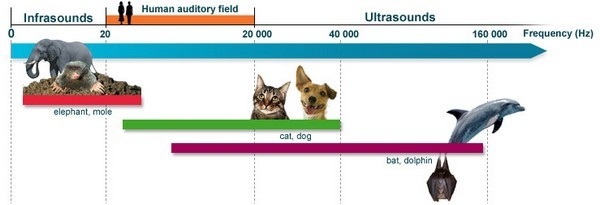Cats are often thought of as aloof, independent creatures. But do they really have such super hearing that they can hear a dog whistle? Let’s find out.
History Of The Dog Whistle
In the 18th century, hunters in England began using dog whistles to train their dogs to track and flush out game. Dogs have been used in hunting and herding for centuries, and their unique abilities to hear high-pitched sounds have been exploited by humans for many years. The earliest known use of a dog whistle dates back to ancient Greece, where shepherds used them to control their dogs. The dog whistle became increasingly popular in the 19th century, as it was used to train dogs for a variety of tasks such as search and rescue, sledding, and even circus tricks.

Dog owners can use a dog whistle to train their dog to stop barking on command, or to associate the sound of the whistle with a negative experience (such as being scolded) in order to discourage excessive barking. Today, dog whistles are still used for training and hunting, but they have also become a popular tool for controlling nuisance barking. Some dog owners also use dog whistles to communicate with their dogs from a distance, or to get their attention when they are distracted.
What Are Dog Whistles Used For?
The high-pitched sound of the whistle is able to travel long distances, making it an ideal way to get a dog’s attention when they are far away. Dog whistles are often used by dog owners and trainers to get the attention of their dogs from a distance. Additionally, dog whistles can be used to train dogs to perform certain behaviors, such as coming when called or sitting on command.
Why Can Cats and Dogs Hear Ultrasonic Sounds?
And can cats hear these noises too? As anyone who has ever been to a dog park knows, dogs can hear things that humans can’t. They can hear high-pitched noises that are too high for us to hear. But how do they do it?
These are sounds that are too high for humans to hear. Dogs and cats have a special ability to hear these sounds because they have a higher frequency range than humans. It turns out that both cats and dogs can hear ultrasonic sounds.

This is why you may have noticed that your grandparents can’t hear as well as you can. So why can’t we hear these ultrasonic sounds? It turns out that as we age, we lose the ability to hear high-pitched sounds.
So, if you’re ever wondering why your dog is barking at something that you can’t hear, it’s probably because they can hear ultrasonic sounds that you can’t.
Does A Dog Whistle Have Any Use For Cats?
So, does a dog whistle have any use for cats? Cats have very sensitive hearing and can pick up on high-pitched sounds that humans can’t hear.
There is no definitive answer, but some people believe that cats can be trained to respond to a dog whistle just like they would to any other cue. For example, you could use a dog whistle to get your cat‘s attention, or to get them to stop doing something.

So, if you’re trying to train your cat with a dog whistle, you may want to consider using another type of cue. Others believe that dog whistles are ineffective with cats because they can’t hear the high-pitched frequencies.
The Danger of Dog Whistles
Though you may not be able to hear it, your dog can pick up on high-pitched noises that are outside of the human range of hearing. This means that dogs can hear sounds that are up to about four times as high as the ones we can hear. They can hear sounds at frequencies of up to about 45,000 hertz, while the average human can only hear up to about 20,000 hertz. This is because dogs have a higher range of hearing than we do.
While this heightened sense of hearing can be helpful to dogs in some situations, it can also be dangerous. Dogs are often able to hear things that we cannot, including dog whistles.
However, because dogs can hear these whistles from far away, they can also be used to harass or scare dogs. Dog whistles are often used by trainers and owners to get a dog’s attention. The high-pitched sound can be used to get a dog to come when called, to stop barking, or to perform other tricks.

If you are using a dog whistle, be sure to only use it when your dog is close by. Otherwise, you may inadvertently scare or startle other dogs in the area.
Frequently Asked Questions
1. Can cats hear a dog whistle?
Yes, cats can hear a dog whistle. However, they may not react to it in the same way that a dog would.
2. How does a cat’s hearing compare to a dog’s hearing?
A cat’s hearing is much sharper than a dog’s hearing. They can hear frequencies that are too high for humans to hear.
3. Why don’t cats react to dog whistles?
Cats may not react to dog whistles because they are not trained to respond to them. Also, the frequency of the whistle may not be one that is naturally attractive to cats.
4. Can cats be trained to respond to dog whistles?
Yes, cats can be trained to respond to dog whistles. However, it may take some time and patience to do so.
5. What are some other ways to get a cat’s attention?
There are a few other ways to get a cat’s attention. You can try making a loud noise, waving a toy around, or calling their name.
Final thoughts
Yes, cats can hear a dog whistle. The frequency of the sound is within the range of frequencies that cats can hear. Dogs, on the other hand, can hear a much wider range of frequencies, which is why they can hear dog whistles that we can’t.
